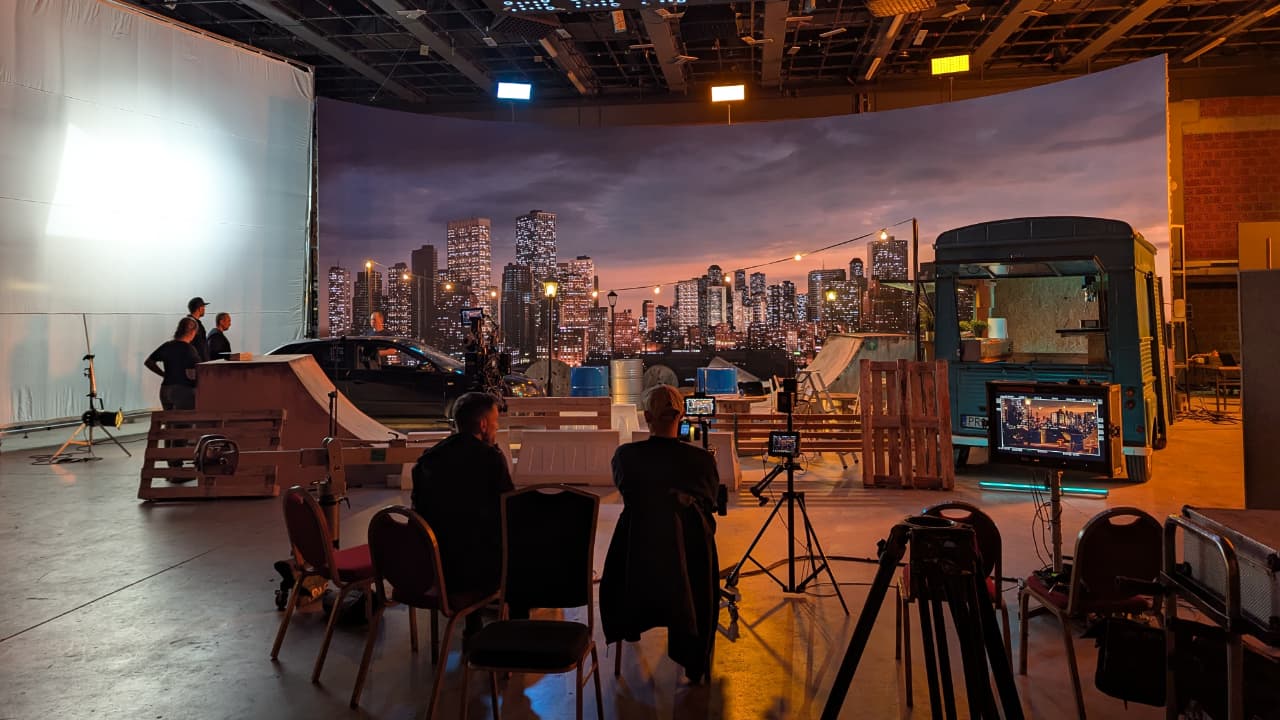
Chaos reckons that Chaos Arena could save Hollywood millions of dollars by removing some of the biggest costs of virtual production and bypassing game engines completely.
The whole and rather interesting idea of Chaos Arena is that productions can use their normal pipeline to put ray-traced 3D content on LED walls in a matter of minutes.
It was designed to help studios quickly move their 3D scenes from popular tools such as Maya, Houdini, Blender and 3ds Max onto LED screens, without a game engine. Artists simply build their assets, bring a V-Ray scene file into Chaos Arena and they are ready to start their virtual shoots. Chaos is also working on USD and MaterialX support, so artists can bring in any assets or shaders they want, even if they originated outside of the Chaos ecosystem. Artists can already use millions of existing assets from TurboSquid, Evermotion and KitBash.
Unlike game engines, Arena will deliver fully path-traced quality renders in real-time, accurately capturing lighting and seamlessly blending virtual environments with physical sets. Because its results are fully path traced, Chaos says that Arena can handle an almost limitless amount of geometry. Chaos recently experienced this while working on the short Ray Tracing FTW, which saw the team bring 2.4 trillion polygons to the screen for three days straight, without a single crash.
Arena is powered by Chaos Vantage, one of the first path tracers to support Nvidia’s DLSS 4 ray reconstruction/upscaling technology, a suite of neural rendering tools designed to boost FPS and image quality. By implementing DLSS 4’s new denoiser algorithm — built on a new AI transformer model — users should be able to enjoy a noticeable improvement in the visual fidelity of wires, hairs and interior scenes without upgrading their current RTX cards. This boost ensures that even after denoising and/or upscaling, users will see perfect anti-aliasing of objects and textures as fine as 1 to 2 pixels.
“Virtual production has been transformative, but the current process is full of crashes and rebuilds that can cost studios thousands of dollars per minute,” said Christopher Nichols, Director of Special Projects at the Chaos Innovation Lab. “Arena will not only let artists use the same assets from pre to post, but adds in a level of real-time path tracing and stability that wasn’t possible before today. This is exactly what Hollywood needs to rein in budgets and kick off the next big wave of independent filmmaking.”
Pricing and availability
Arena is available now and priced on a daily or annual rate. Arena can also be tested in a trial format that includes a watermark, so studios can see if it’s right for them. For full pricing details, custom arrangements or a demo, contact Chaos’ Arena team.


Comments